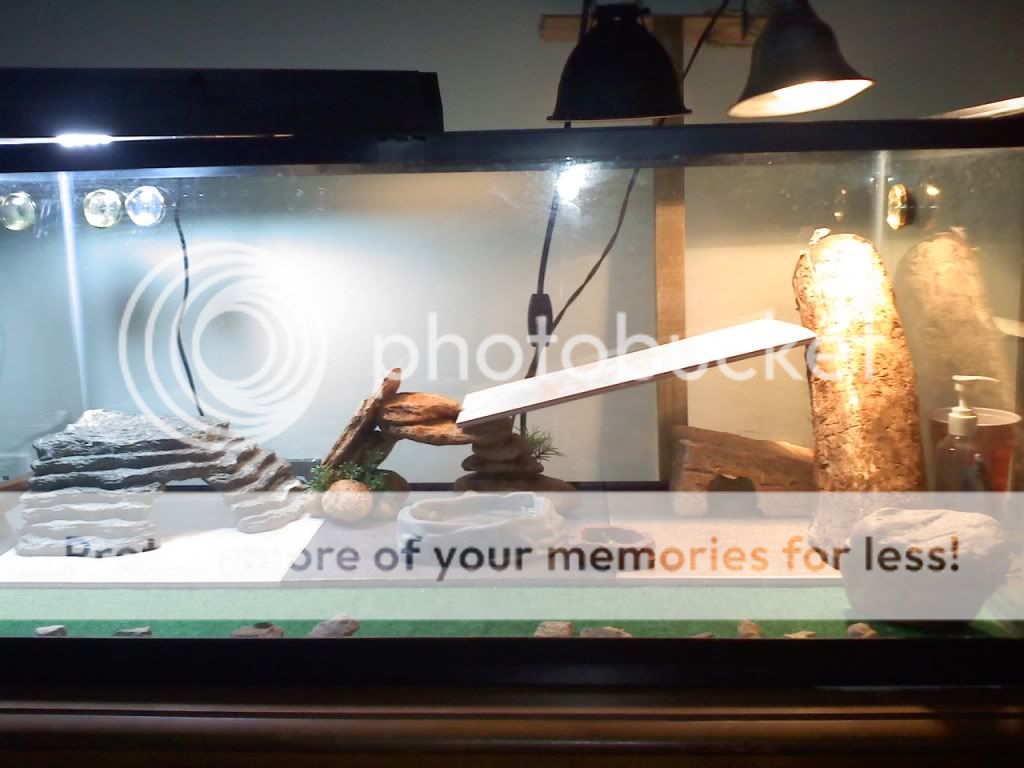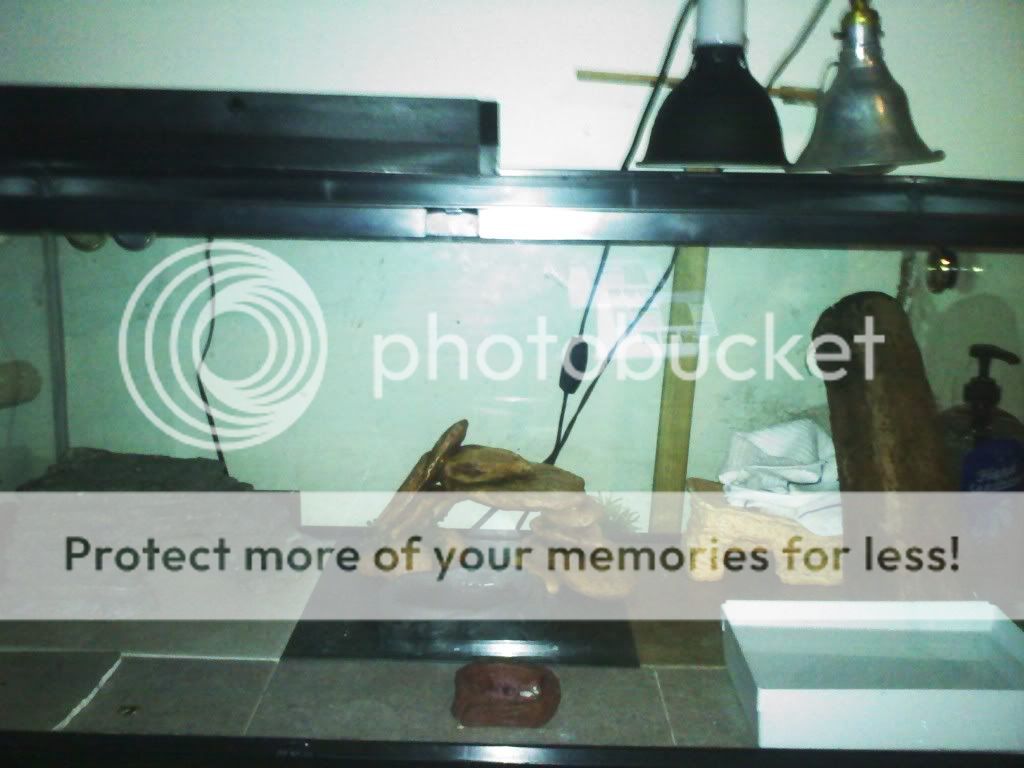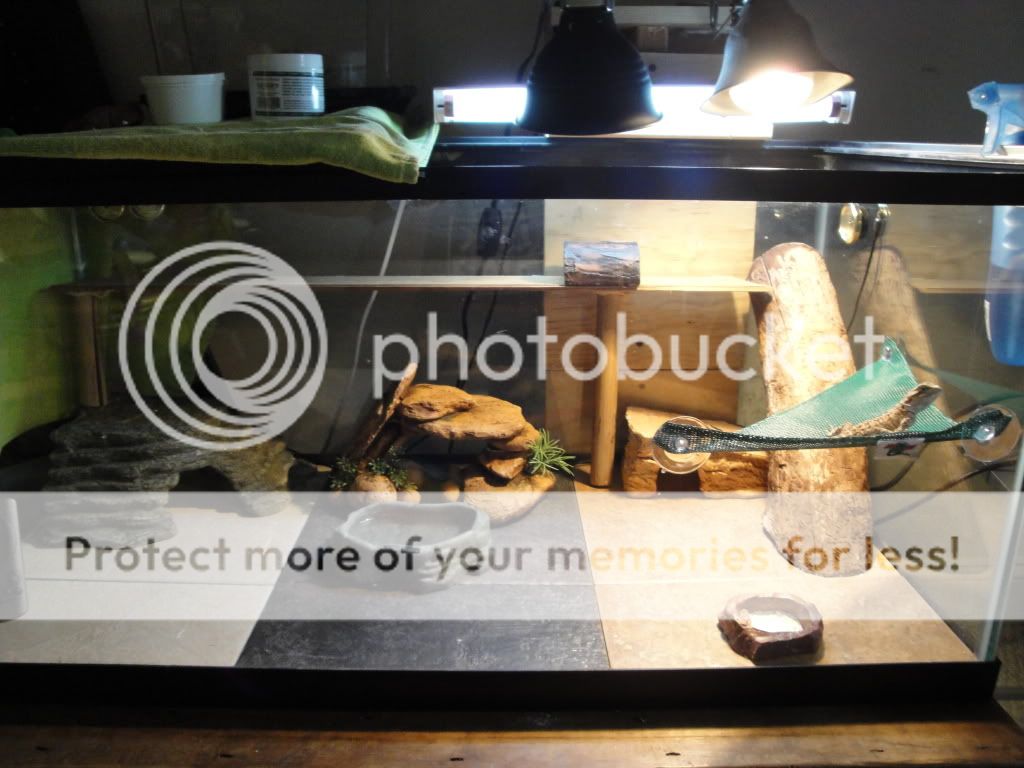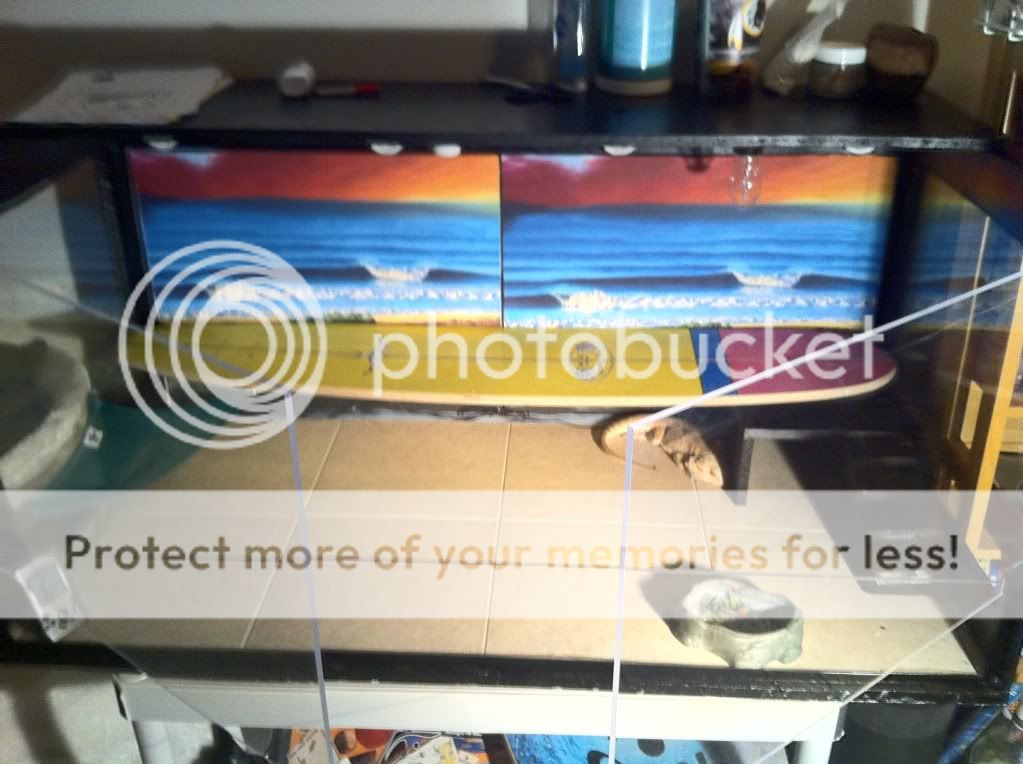It's extremely seasonal.
Their setup is always changing with the seasons, but they're pretty good about letting me know if they like something or want something put back how it was, and most of the time it's just tweaking and maintenance.
The main viv is inside atop a single bed.
Right now there's no connecting tunnel, which they're rather aware of as I'm seeing far more frequent nose-pokes and signals or just looks from some of them that they want to come and visit or go somewhere interesting.
I kept it attached throughout the winter, only the normally-outside part stayed inside but still provided some nice leg-room, particularly for the painted dragons, who tend to get bored while the beardeds are brumating, but I had to stop using it as it kept getting torn and the patching was constant and made it apparent it might be dangerous to use outside unsupervised.
(I have a wren that visits me and keeps the loose crickets down in numbers, and she's also my equipment inspector.)
It's already warm enough to keep outside full-time again, though, so I plan on having that set up soon, but first I'm upgrading it to a much more durable, finer-mesh screen, and I'll see if they'll tolerate a 10" high tunnel that can be fastened far more securely and without a ton of tape compared to that 19" atrium of a tunnel I resigned to using when they outgrew the 4" and rather uninviting early experiments.
Their outside viv typically sits rooftop and is basically just a sun room.
Minimally furnished, nothing hard or heavy, mostly more meshy bird-house type hangings and climbs, all very hammocky.
No solid floor, just more screen, so the rain doesn't build up, just washes everything.
I'm not sure if this kind of indoor/outdoor setup is a common adaptation, but I'd encourage anyone to try it as long as they know what they're doing.
I'm sure people with screened porches or rec rooms or decks and tents and the like could come up with something much more lavish and fun.
As far as the humidity in the main viv, it's really never been a concern.
Overall, it's been way less of an issue since I got them out of the 29-gallon glass tank their former owners had them in.
I don't know if you've worked with screen cages in different settings, but a screen cage right by an open-most-of-the-year window, baking in an assortment of heat emitters, heat lamps, and U.V. lamps, becomes almost essentially a big dryer.
I usually have to work the other way just to provide a little bit of occasional humidity for comfort and the sake of the plants.
The waterfall is inside (which is in a different configuration now so it doesn't take up the whole swimming area) and serves mostly as a perch/basking spot/alternate mode of pool access, makes a little bit of a dent in the humidity levels right around it, but hasn't seemed like a concern, and I usually keep their food dishes aways from the
drinking and
bathing areas.
(despite the unconscious habits one might assume, creating some kind of beardie kitchen)
I used to let the waterfall and the fountain run twelve hours at a time when I thought they might not be
drinking enough, but now they only run for a few short invervals during the day.. just enough so the water doesn't grow stagnant and stays fresh longer.
(Also these are minimalist pumps; they hardly gush.. they kind of drip.)
Grew apparent they were fully cognisant of water, flowing or not, but sensitive about temperature differentials, so I put a Hydor mini aquarium heater in the pool, and I seldom
bathe any of them anymore as they enjoy
bathing themselves spontaneously as long as the water's not too chilly.
Again, it changes a lot.
I might take more pictures when it's doing something different.
It's a bit makeshift and a bit unintentionally modern, but beardies aren't stupid and they know their habitat's not the wild, so instead of focusing on giving them misleading visual cues, I just try to make it work for them as what it is, and they're often as glad to be back home as they are to be out.















































